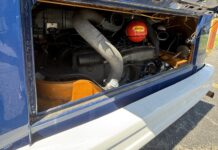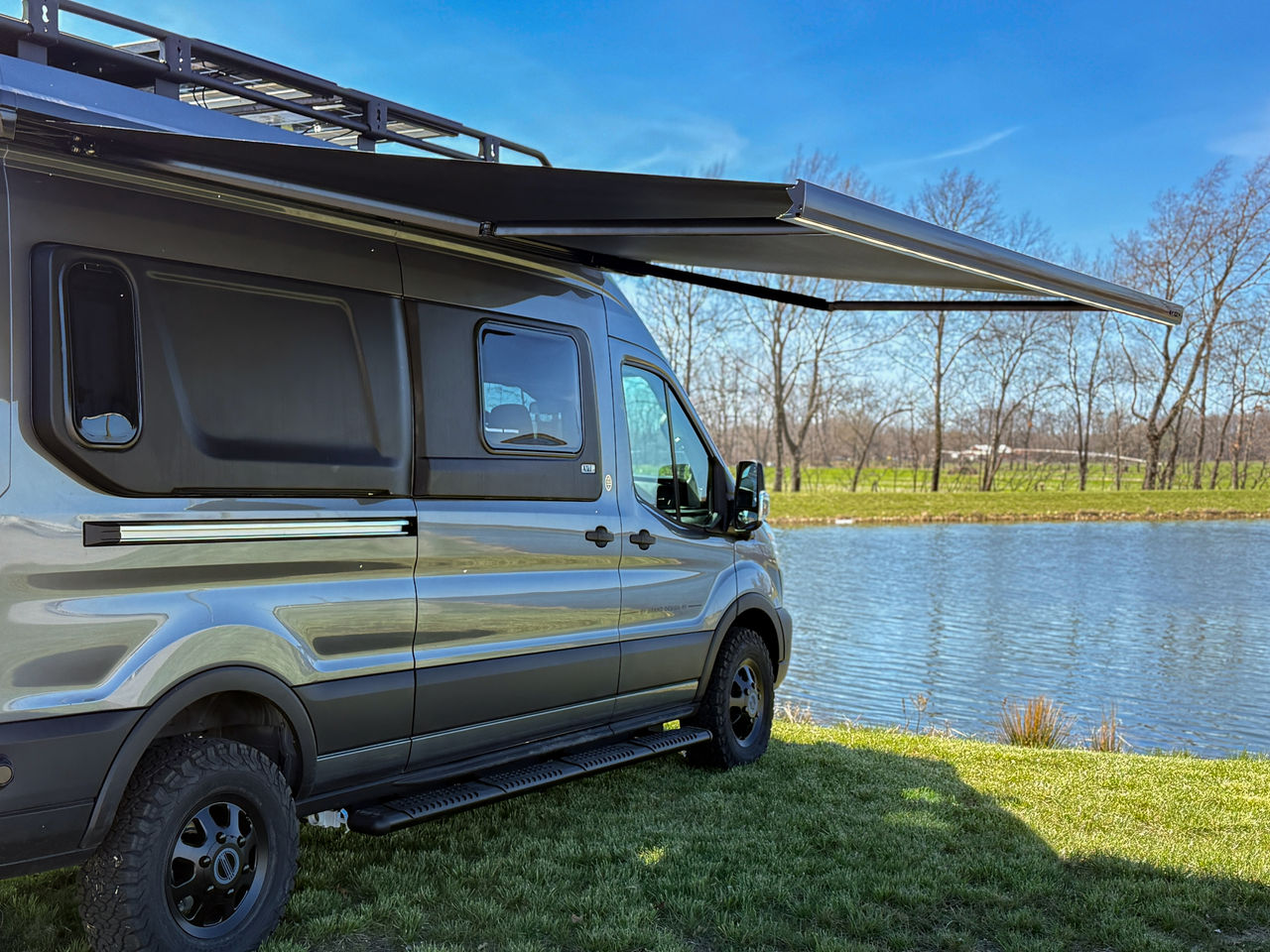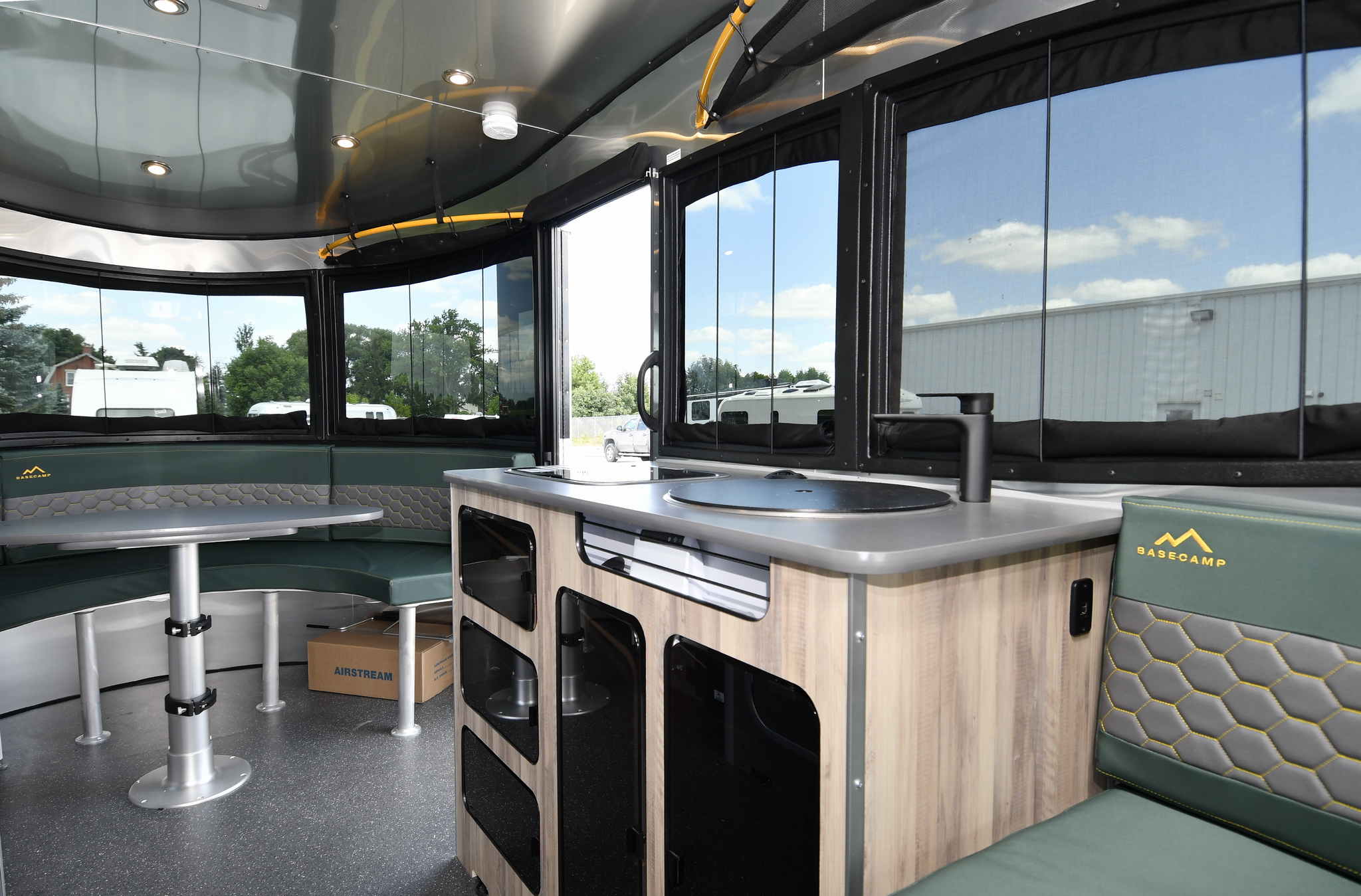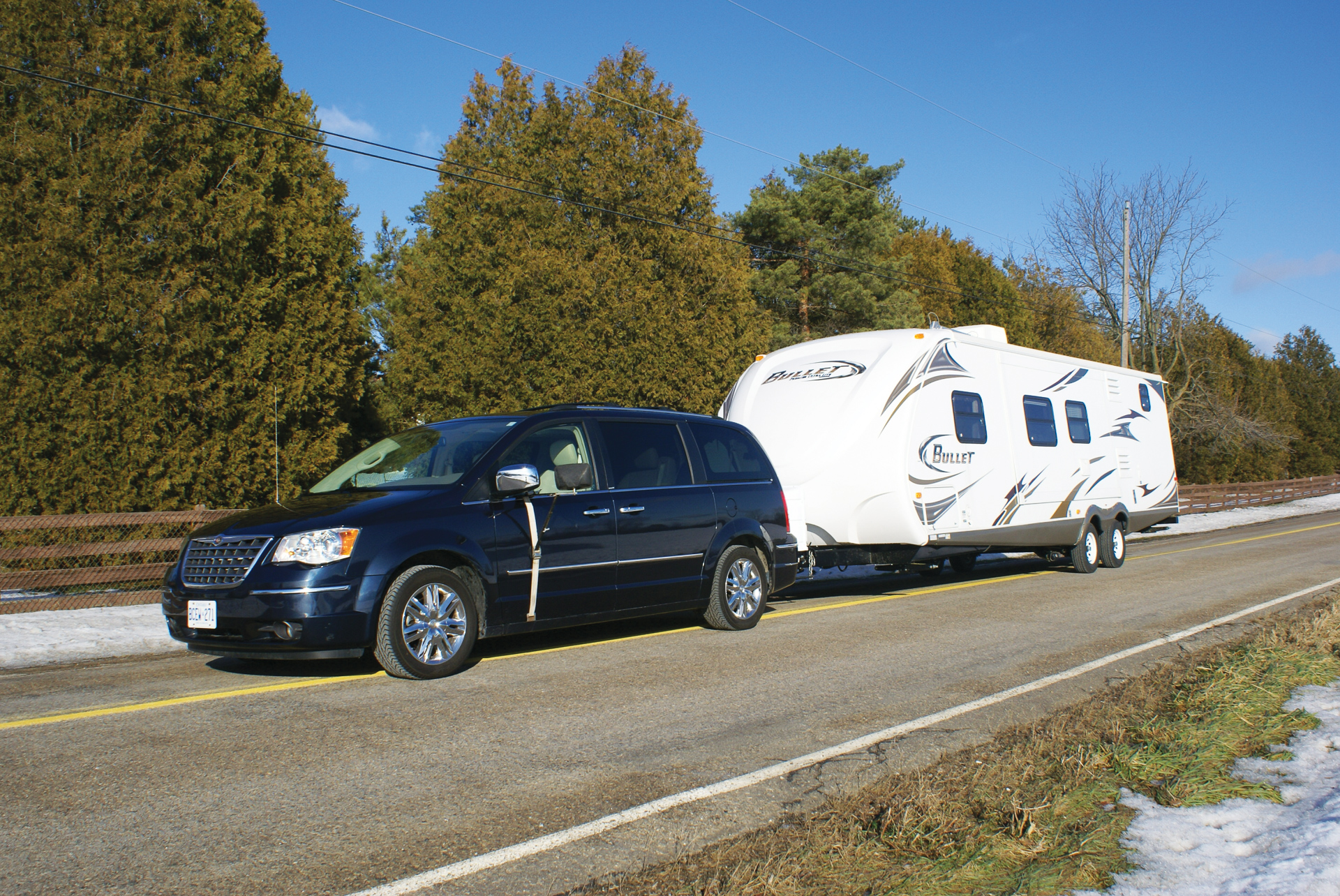Can a full-size trailer outperform a compact unit at the gas pumps? We put the theory to the test!
By Andy Thomson
A few weeks ago, a family of five dropped in to visit. Their current rig is a hardtop camper that they tow with a Honda Odyssey van. They want to be able to use their trailer for a longer season and to achieve this goal they want to get away from canvas. In order to have as much room in a travel trailer as they have in their hardtop camper they have to look at a trailer at least 24’ long – and the one they like, which would work best for them, is 28’ long and 4,800 lbs. with a low profile and a reasonably aerodynamic shape. They were concerned about exceeding the 3,500 lb. towing recommendation that Honda puts on their van and so they were considering a less aerodynamic 21’ trailer that weighed 2,800 lbs. but would be quite crowded for family of five.
I have no concerns with the Odyssey and the 28’ trailer combination as we have over 200 customers that tow with Odysseys, and we have been using them extensively since they were introduced in 1999.
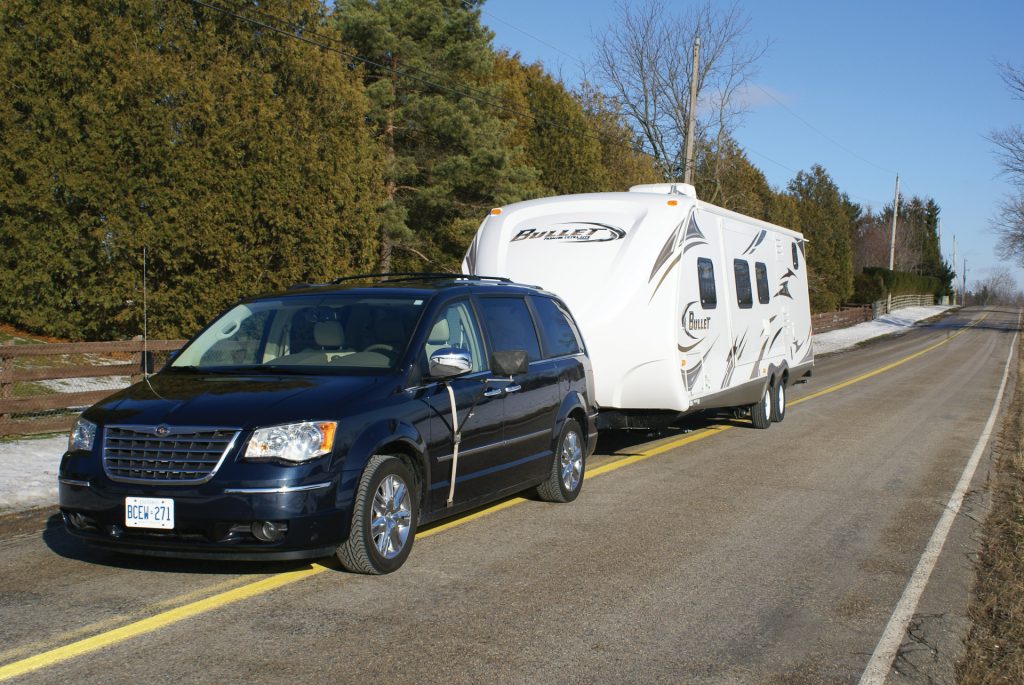
As far as towing capabilities are concerned, it is interesting to put things into perspective. Twenty-five years ago, Lee Iacocca’s first Dodge minivan came with a 130 HP engine, 3-speed transmission, and tiny little brakes and suspension – it boasted a 3500 lb. towing recommendation, and it seems that all front wheel drive vans since then have the same recommendation no matter how capable a tow vehicle they are. Most of the current front drive vans have long wheelbases in relation to their rear overhang, along with a wide stance and a low centre of gravity. From every safety and stability perspective they are hard to beat as tow vehicles. The new vans with 250 HP and 5 or 6-speed transmissions have plenty of power to get weight moving and climb hills. As long as the trailer is reasonably aerodynamic they do a fantastic job of towing.
To answer the concerns of this family, we did what we often do here at Can-Am RV. We test drove each trailer hitched to their van. Once they had towed both trailers, it was an easy decision for them to go with the 28’.
One question that this customer asked was “at what point does weight become more important than aerodynamics; there must be a point where a trailer is light enough that aerodynamics cannot make up for the weight difference.”
My best answer was that there would certainly be a point where weight became more of an issue than drag, but not in the weight ranges we were looking at. However the question continued to bother me; after all, weight does cause some additional rolling resistance in the tires and bearings, and aerodynamics are not always as effective as they may appear to the casual observer.
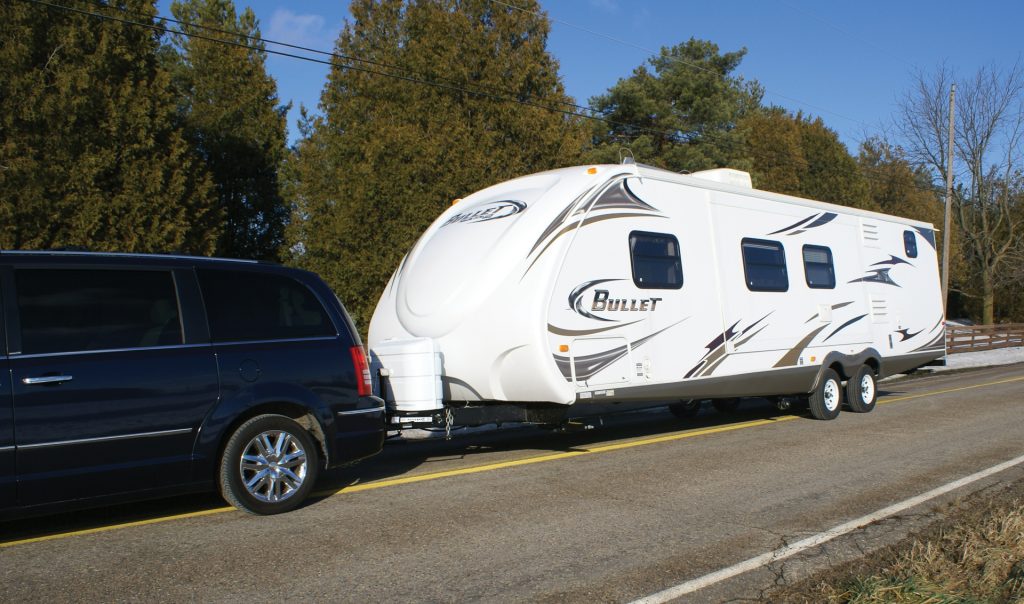
As it happened, about this time we picked up a new trailer call the “Bullet”. It is an interesting design, with side walls that are sloped in at the top to reduce drag and it has an extremely aerodynamic design for its front fiberglass cap. As an added bonus, the profile is relatively low – the top of the side walls measures just 107” high. The weight of this trailer is quite low for a 32’ with two slide-out rooms that sleeps 9 and has all the amenities – it tops the scales at just 5,820 lbs.
With the new Bullet trailer as our example of aerodynamic design, we cast an eye for a suitable benchmark to use for conventional trailer construction. Sitting on our used RV lot was a trailer at the opposite end of the streamlining spectrum, a traditional wood framed aluminum skin 16’ trailer. Although this trailer is pretty boxy in its overall shape, it has some advantages from a drag standpoint since it weighs only 2,990 lbs. The used trailer has a single axle which has a little less drag than a tandem, and the profile is quite low with the roof line only 100” off the ground.
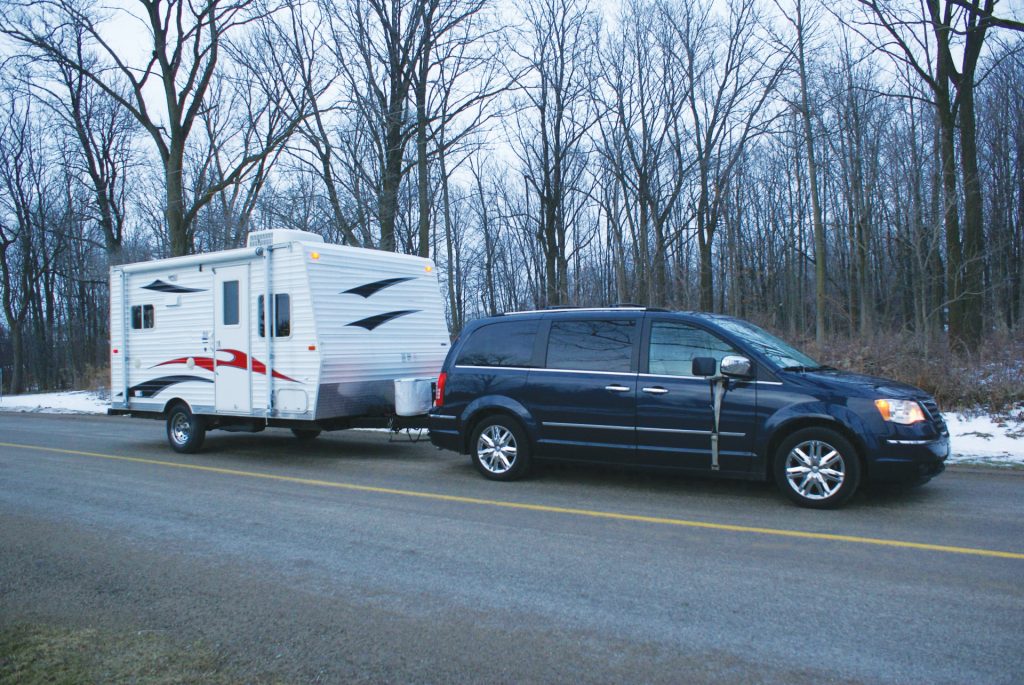
Which tows easier?
If you compare the two trailers, the Bullet is twice as long, almost twice the weight, with twice the tires to turn and the body is 7” taller. Towing the two “back-to-back” with the same vehicle would be an interesting comparison.
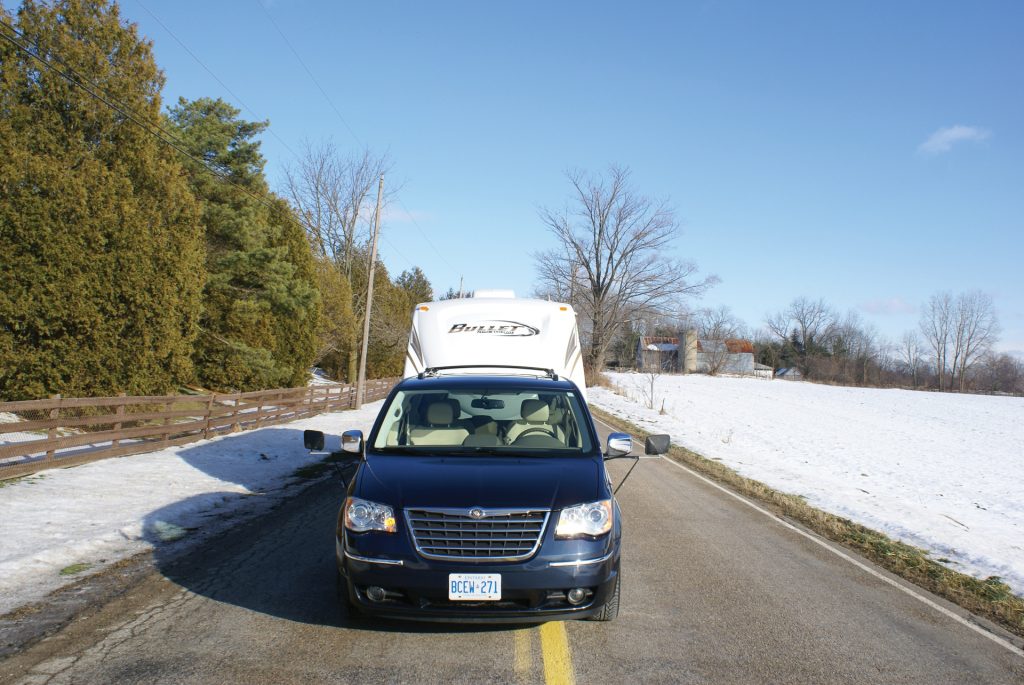
For this experiment, I decided to use a tow vehicle that is very popular among RV enthusiasts. In our fleet of tow vehicles we have a Chrysler Town & Country van which has a 4.0 Litre V/6 and a 6-speed automatic transmission.
To test mileage I average two runs on the 401 highway starting out heading west from our store, and then re-tracing the route, using the on board mileage computer to provide a read-out in terms of average fuel efficiency as well as “instant” fuel efficiency. Since there will almost always be some wind, this method averages out the varying wind conditions. There are some gently rolling grades on this stretch of highway, but it is pretty flat all in all. Now this is certainly not an absolutely scientific test, but it gives a very good comparison. I use the cruise control and leave the engine running while switching trailers so that I can hit the “resume” button and know that I am going the same speed on all four runs, which in this experiment was 60 MPH or 96 KPH.
Results: 12% better fuel economy with the Bullet.
As well as towing easier, the aerodynamic Bullet trailer felt much better on the road – it was not buffeted around nearly as much by passing transports as the square trailer was. The modern streamlined design also produced significant handling advantages. Usually, a 32’ flat wall trailer is affected a fair bit by cross-winds but the Bullet is very stable and crosswinds had a minimal effect on it. The sloped sidewalls and the front cap design would also contribute a lot to the stability of the trailer at highway speeds. Was this the ideal touring configuration? Not quite, but close – the Bullet has leaf springs but no shock absorbers, so I think the addition of shocks would improve the highway roadability of this trailer. One thing that is surprising is how little you notice the sloped walls inside the Bullet. The interior designers did a good job of masking the effect, and most people that look inside the trailer don’t notice the tapered sides. So we accomplished some interesting goals with our trailer towing experiment – although there may be a point where the lines between aerodynamic drag and weight cross, it is likely out of the travel trailer spectrum. While the final determination of fuel efficiency must, of course, be a combination of many factors, it would appear that aerodynamics plays a more significant role in fuel efficiency at highway speeds than the weight of the trailer alone. Most vehicles that are going to have enough power to pull the trailer through the air are going to have enough power to get the weight moving, and once you reach touring speed, the energy required to maintain the speed on level terrain is reduced. As you get into larger fifth wheels the weights are likely to be high enough to make more of a difference… and that gives me an idea for another test!







